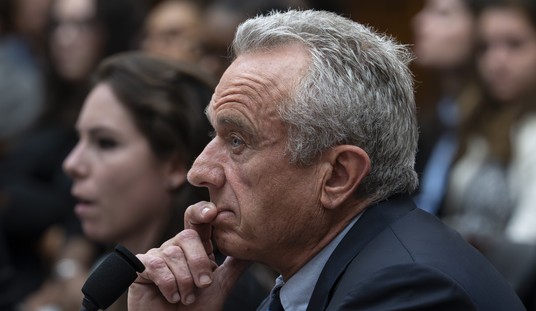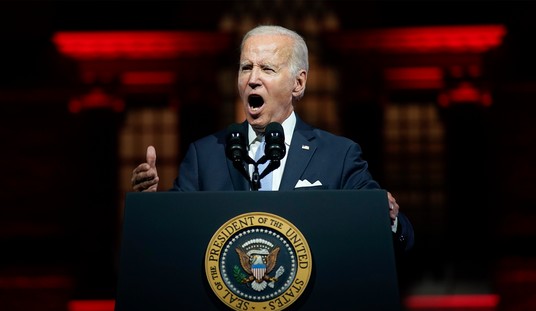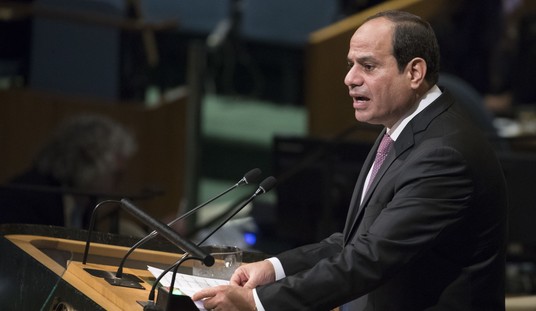Depending which newspapers you are still reading, the fight against al-Qaeda is either the prime mover of the War on Terrorism or a mere sideshow, a shadow puppet useful in advancing the Bush agenda.
(A map of “PAKISTAN’S NORTHWEST FRONTIER”)
The Denver Post continues to regard it as a threat: “Amidst the attention it has lavished on Iraq, it’s essential that the Bush administration keep a sharp eye on al-Qaeda. Intelligence officials have noted renewed activity in remote border areas of Pakistan where Osama bin Laden and his legions have vanished from scrutiny.”
The Boston Globe, while it cannot resist asserting that “Bush has played politics with the Qaeda threat”, cannot avoid concluding that although it may be a source of “episodic terrorism”, Osama Bin Laden’s old organization is essentially washed up.
Al Qaeda has little chance of toppling any government in the Muslim world. It presents instead a threat of episodic terrorism, and it has provoked the security services of many countries to cooperate against that threat. That cooperation should be intensified and expanded, but the threat from Al Qaeda does not justify Bush’s curtailing of Americans’ civil rights or the government’s invading of their privacy.
Just what threat does al-Qaeda pose in today’s world? On that question hinges the answer to whether America is ‘wasting’ its effort in the Middle East or whether other strategic considerations are more important than the pursuit of the organization which perpetrated 9/11. To its credit, the Boston Globe recognizes this as the central question, “Which is it, then, a hounded, faltering Al Qaeda or an enemy that has regrouped and become a greater threat than ever? The answer is crucial not only for national security but for America’s open society.”
Online alternatives to the newspaper view, Bill Roggio and David Gartenstein-Ross understand that al-Qaeda’s current threat may be indirect; that it’s dagger may not point straight at the West, but nearer at hand.
In sum, Al-Qaeda is but one element-yet an important element-in the largely underrated conflict playing out in Pakistan’s Northwestern provinces for the territorial integrity of Pakistan. And it is in the ultimate control of Pakistan that the real threat lurks.
One testimony to the effectiveness-and limitations-of the coalition in Afghanistan is that it has driven the Taliban and al-Qaeda alliance into Pakistan’s northwestern border where, protected by an international boundary, it has taken over that part of Pakistan. There. while coalition forces watch helplessly in Afghanistan, the New York Times confirms what Ross and Roggio had been arguing all along — that the Taliban and their allies the al-Qaeda are creating a state within a state in Pakistan.
Senior leaders of Al Qaeda operating from Pakistan have re-established significant control over their once-battered worldwide terror network and over the past year have set up a band of training camps in the tribal regions near the Afghan border…. American officials said there was mounting evidence that Osama bin Laden and his deputy, Ayman al-Zawahri, had been steadily building an operations hub in the mountainous Pakistani tribal area of North Waziristan.
Al-Qaeda’s greatest menace may be in its capacity to destabilize Pakistan, the only Muslim nation in the world with a functioning nuclear arsenal. Until recently the rise of the Taliban/al-Qaeda within Pakistan had been disguised by the terms of a peace deal, which explained the apparent freedom of movement by Taliban elements within the country. But now it seems that the Waziristan peace deal has failed. Rather than providing the final nail in the Taliban/al-Qaeda’s coffin, Roggio & Gartenstein-Ross write about how the group may now have recovered its pre-9/11 capability and even exceeded it.
There are three areas of particular concern to note. First, the gathering of al-Qaeda forces in Waziristan and other parts of Pakistan makes the terrorist group increasingly look very similar to how it looked prior to 9/11…. Second, a number of British citizens of Pakistani descent have been to training camps in Pakistan. This is of great concern because people traveling with Commonwealth passports come under less suspicion when entering other Commonwealth countries…. [A] third point of concern is that, although analysts concede that the Waziristan Accord has failed, they aren’t discussing what should be done now.
According to Roggio, the same international boundary that prevents the Americans from pursuing the Taliban leaves Pakistan alone in the same ring with powerful and predatory terrorist forces, some of them of its own conjuring.
Al-Qaeda’s influence is not limited to North Waziristan. The fact is al-Qaeda and the Taliban have expanded well beyond North Waziristan, into the FATA, NWFP and Quetta. The FATA agencies of South Waziristan, Khyber and Bajaur are heavily under the influence of AQAM, and there is strong evidence that NWFP districts of Tank, Dera Ishmail Khan and even Peshawar, the home of the provincial capital, have fallen under the Taliban’s sphere of influence. The Taliban and al-Qaeda maintain large training camps in South Waziristan. Quetta is the hub for the Taliban leadership operating in southern Afghanistan. …
Today, Pakistan is under a concerted attack as the Taliban, al-Qaeda and other terrorist groups conduct suicide attacks, roadside bombings and other attacks on government and civilian institutions. The Taliban maintains an army estimated to have 200,000 trained foot soldiers loyal to their Taliban commanders, and is threatening to split NATO in Afghanistan. Pakistan is fighting a civil war, yet continues to try to negotiate further ‘peace deals’…. We hope the dominant voices in the American intelligence community recognize that the problems with al-Qaeda in North Waziristan are but the tip of the iceberg.
Ultimately, the answer to the Globe’s question “which is it, then, a hounded, faltering Al Qaeda or an enemy that has regrouped and become a greater threat than ever?” may well be “both”. Al-Qaeda has faltered whenever American power could get at it; but the same al-Qaeda has prospered everywhere it could regroup. Like a deadly virus, buried deep within healthy tissue, it thrives unreachable by the surgeon’s knife.
If it is any consolation, Osama Bin Laden and al-Qaeda may no longer be synonymous. The South Asia Analysis Group cites recent al-Qaeda communiques that suggest Osama is no longer a factor; the communiques refer to Ayman al-Zawahiri as its head, but subordinate to Mullah Omar.
In the portion of the message of February 12, 2007, addressed to the American people, Zawahiri says: “You are not facing individuals or organizations, but are facing the Jihadi Intifada of the angry, alert Muslim Ummah. Therefore, you are just wasting your time and effort by claiming to seek to eliminate this person or that or such-and-such group or organization.” After pledging his personal allegiance to Mulla Omar, Zawahiri calls upon the Muslims of the world to unite under his leadership.
While the immediate menace may be regional, it is best to remember that al-Qaeda’s vision remains global.
Half a decade has elapsed since the events of September 11 and the strategic landscape has altered considerably. While America is still gripped by the imagery of Vietnam, Osama and Saddam, the real nature of the battle has shifted from a confrontation between the armies of state supporters of terrorism, to a contest between theirs and Western secret services.
Meanwhile, the debate over whether America should send troops to Afghanistan instead of Iraq roils Congress. At the same time the threats posed by Iran and the cancers growing within Afghanistan and Pakistan’s Northwest frontier may no longer be susceptible to conventional solutions. Perhaps the West has already won Round One of the War on Terror. Trouble is, we are now starting the First Inning of a very different game.
Richard Fernandez is the Sydney editor of Pajamas Media. His writings can also be found at The Belmont Club.









Join the conversation as a VIP Member